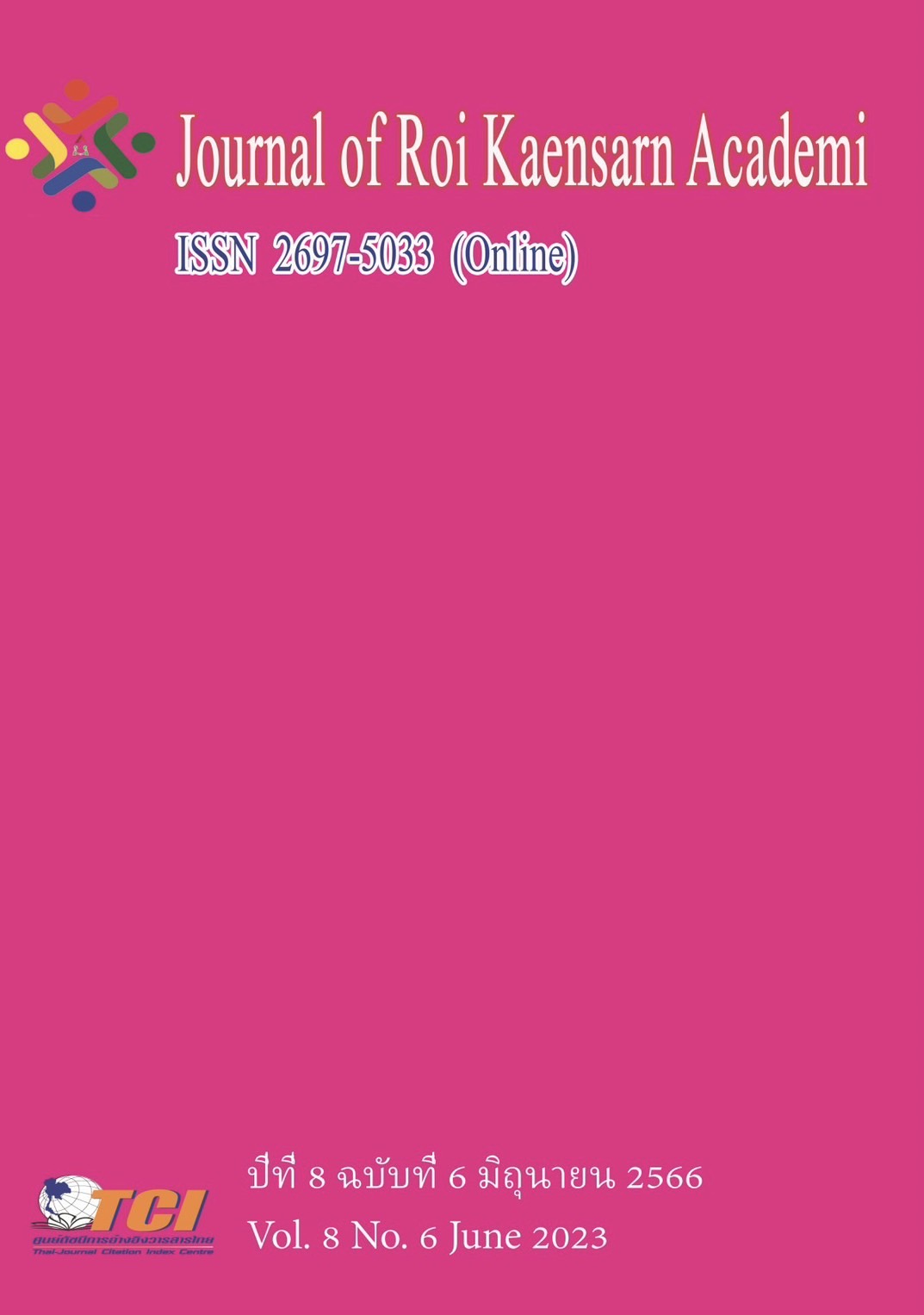A Study on the Philosophical Dimension of Ritual Music of Mahayana Buddhism in Chinese Han Tradition--A Case Study of Huayan Temple in Chongqing, China
Main Article Content
บทคัดย่อ
This paper analyzes and studies the ritual music of Chinese Mahayana Buddhism, using Huayan Temple in Chongqing as an example, using field investigation, music data analysis, and other research techniques.Huayan Temple's Buddhist ritual music is not only an essential component of Chinese Buddhist music but also a significant manifestation of Chinese traditional culture and philosophy Huayan Temple's Buddhist ritual music has extensive and profound connotations and significance, which provides a means for modern people to pursue inner serenity and tranquility and has significant cultural and practical value.Through the preservation and transmission of Buddhist ritual music at Huayan Temple, it can radiate with new vigor and vitality into contemporary society and infuse fresh energy into the transmission and innovation of traditional culture.Therefore, it is of great practical and historical importance to continue researching and promoting the Buddhist ritual music of the Huayan Temple in order to promote the transmission and development of traditional culture as well as the sublimation of human spiritual civilization.
Article Details
เอกสารอ้างอิง
WU Guodong. (1997). Introduction to ethnomusicology . People's Music Publishing House.
Pu Heng Qiang Jun. (2000). Sacred Rites and Music -- A Study of Orthodox Taoist Ritual Music. Bashu Press.
Yang Minkang. (2016). Description and Interpretation: Methodology Orientation of Music Ethnographic Description [J]. Journal of Shanghai Conservatory of Music (04), P96-103.
Yang Minkang. (2010). A Preliminary Comparison of the phonological forms of Buddhism taught by cross-border ethnic groups in Yunnan and Southeast Asia [J]. Big Yin, 3 (01), P60-101.
Xing Guang. (2013). Buddhist Impact on Chinese Culture[J]. Asian Philosophy, P23 (4).
Zhou Yun. (2018). Music in Contemporary Mainland China -- Taking the "Water and Land Dojo" ritual Music of Tianning Temple as an example [J]. Music of China (04), P64-71.
LI Qiang. (1994). Hua Hua of Buddhist Music and Dance (I) . Symphony (Journal of Xi 'an Conservatory of Music). (01), P18-20.
Liu Qiming. (2018). Study on the retention and evolution of Musical cultural characteristics of the Western Regions in the Central Plains: A Case Study of music images of Longmen Grottoes in Luoyang and Buddhist music culture of Daxiangguo Temple in Kaifeng . Peony. (36), P44-46.
Robert H. Sharf. (2002). On Pure Land Buddhism and Ch'an/Pure Land Syncretism in Medieval China. T'oung Pao, P88(4/5).
Mesoscopic wind. (2012). A Study on the Musical Factors of "Laity" in Tang Dynasty [J]. Sound of the Yellow River. (13), P92-93.
Yuan Jingfang. (2015). Song and Yuan Melodies in the Buddhist Music of the Early Ming Dynasty -- Discussion on the composition of the Song of the Name of the Venerable Buddha Tathagata Bodhisattva . Music of China. (03), P1-15.
Fan Bangjin. (2013). Background and engraving of the Song of the Name of Buddha Buddha Buddha Buddha in Yongle Neifu of Ming Dynasty. Anthology of Tianlu, 3 (01), 29-37.
Sun Xingqun. ( 2015).An Important Achievement in the Study of Chinese Traditional Music -- Reading Pu Hengqiang's Sacred Rites and Music -- A Study of Orthodox Taoist Ritual Music . Music of China. (01), P122-124.
Zou Jianlin, Fu Limin. (1997). Aesthetic Character in the Category of traditional Music Aesthetics . Music of the People. (12), P31-33.

